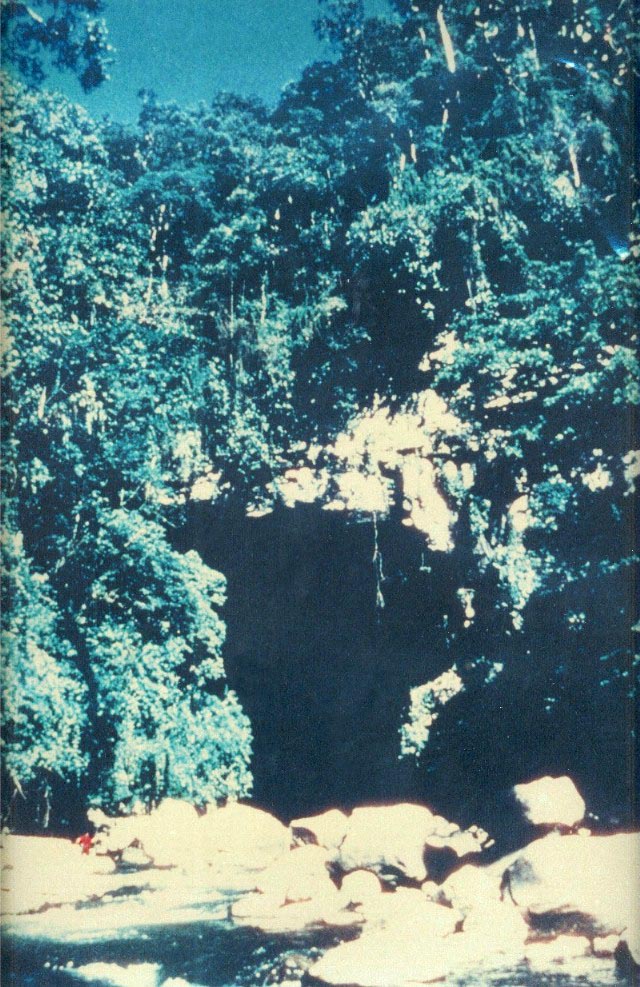Special report on the discovery
of a huge natural bridge in Peru
Courtesy of Alfonso & Peter Rizo-Patrón and SEANTEC S.A.
What is perhaps the most massive natural bridge in the world was discovered from aerial photos of a remote Peruvian jungle by Alfonso Rizo-Patrón in 1961. He noticed that the Cutivireni River was interrupted by a large natural tunnel. An aerial photo shown below, taken on August 26, 2002 by Alejandro Balaguer (a well known nature photographer in Peru), clearly shows one of the entrances to the tunnel as well as the river flowing in the canyon bottom at the other end of the tunnel.

In 1987, 26 years after its identification from aerial pictures, a Peruvian-French expedition sponsored by the magazine Paris Match and led by Diego de Almenara was the first to reach the natural bridge by land. The maps and location of the bridge were provided by the discoverer, Alfonso Rizo-Patrón. The french members of the expedition were Jeromine Pasteur, Michel Saens, and Claude Cavezalle. The three men and one woman were accompanied by a group of nine native Ashaninkas, without whose guidance the explorers would not have been able to survive the extraordinarily difficult access to the area of the bridge. The round-trip by land took about three weeks. A story on the expedition was published in the Paris Match issue of October 30, 1987.
The photo below, showing one of the entrances to the natural tunnel, was given to Alfonso Rizo-Patrón by the expedition leader shortly after the expedition. Notice the person clad in red at the bottom for scale. There is a waterfall inside the tunnel.

The bridge is located at approximate latitude 12° 1' south and longitude 73° 31' west, in 3,000-foot deep Cutivireni Canyon in the western flank of the Vilcabamba Mountain range, a branch of the Andes. It is a very remote area of countless waterfalls and majestic landscapes.
The bridge has no official name but has been called Pavirontsi Natural Bridge after the Ashaninka word for "bridge". The Paris Match article called it Ponte de Oro. The discoverer, Alfonso Rizo-Patrón, suggests that it be called the "Diego de Almenara Natural Bridge" in honor of the leader of the Paris Match expedition that reached it in 1987 and who died tragically in an airplane accident only two years later.
Peter Rizo-Patrón obtained a stereo pair of aerial photos of the area surrounding the natural bridge and hired a specialized service to develop a Digital Elevation Model from the detailed topography. This is shown in the image below, with 5-meter contour intervals. He then used GIS software to calculate the size of the bridge. It is approximately 625 feet in length, with an opening approximately 100 feet wide and 130 feet high, with a thickness of 100 feet of rock above the opening.
Go to next Gallery feature - Sohoton Natural Bridge, Philippines
Return to International Gallery

